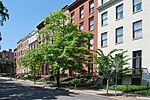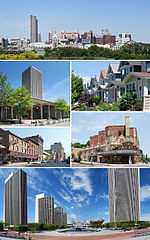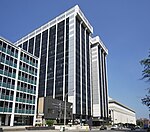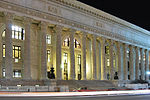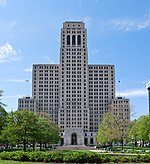New York State Education Building
Buildings and structures in Albany, New YorkEducation in Albany, New YorkGovernment buildings completed in 1908Government buildings on the National Register of Historic Places in New York (state)Henry Hornbostel buildings ... and 4 more
Individually listed contributing properties to historic districts on the National Register in New York (state)NRHP infobox with nocatNational Register of Historic Places in Albany, New YorkNew York State Education Department

The New York State Education Building (commonly known as the State Education Building) is a state office building in Albany, New York. It houses offices of the New York State Education Department (NYSED) and was formerly home to the New York State Museum and New York State Library. Designed by Henry Hornbostel in the Beaux-Arts style and opened in 1912, the building is known for its expansive colonnade.
Excerpt from the Wikipedia article New York State Education Building (License: CC BY-SA 3.0, Authors, Images).New York State Education Building
Washington Avenue, City of Albany
Geographical coordinates (GPS) Address External links Nearby Places Show on map
Geographical coordinates (GPS)
| Latitude | Longitude |
|---|---|
| N 42.653888888889 ° | E -73.758055555556 ° |
Address
New York State Education Department Building (State Education Building)
Washington Avenue 89
12210 City of Albany
New York, United States
Open on Google Maps



